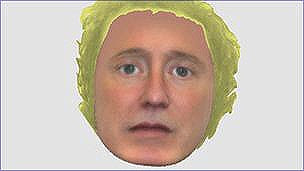NEW ORLEANS Eight homeless squatters who died in a fire at an abandoned warehouse where they were trying to keep warm were accomplished musicians and artists who rejected the label "gutter punk," acquaintances said.
Firefighters said they could not tell the ages or genders of those who died Tuesday in the city's deadliest blaze in decades because their bodies were so badly burned. A 23-year-old man who escaped told the American Red Cross he could not get back in to help his friends because of the smoke, agency volunteer Thomas Butler said. The group had been burning debris to keep warm, with temperatures below freezing, authorities said.
A group of young people sitting on the steps of an abandoned house near the warehouse said the dead included three women and five men.
Rachel Park, 27, of California, estimated their ages ranged from 19 to 30. The victims never thought of themselves as homeless and rejected the "gutter punk" label used by some locals to describe transient youths, who are often seen begging for money or cigarettes on French Quarter Streets, she said.
"They were all accomplished musicians or artists jolly, happy people," Park said.
Park knew the victims by first names only and said one or two were from the New Orleans area, while the others were from elsewhere in the U.S.
Temperatures were just below freezing, unusually cold for New Orleans. The warehouse is in a blighted city neighborhood left even more so by the flooding that followed Hurricane Katrina in 2005.
Linda Gonzales, of the New Orleans Mission, said homeless young adults and teenagers often avoid shelters for several reasons.
"Some of them choose to stay out and you can't make them come in," she said.
The blaze was reported just before 2 a.m., and fire trucks arrived within five minutes to find the building engulfed in flames, fire department spokesman Greg Davis said. Some of the victims may have been rendered unconscious by carbon monoxide, a danger with indoor fires.
All that was left of the warehouse, which sat amid graffiti-covered rail cars and ramshackle buildings, was the blackened foundation and a partial shell of singed corrugated metal.
Nearby, inhabited wood-frame houses, some with Christmas decorations, are interspersed with boarded-up homes with holes in the roofs. The city has more than 55,000 such blighted properties, according to current estimates.
A 22-year-old woman who was not in the warehouse when the fire started told the Red Cross she was one of several squatters who had been using the building for shelter.
Three young people who watched from across the street as firefighters searched for victims with dogs said they knew those who died but would not say more.
Later Tuesday, Audrey Bean, 19, of Philadelphia, strummed a ukulele. "I was living in there with them for a few weeks," she said.
Park and Bean were among a small group of young people in worn clothing, their hands and faces dirty. They piled into a beat-up van and drove away shortly before dusk near the burned remains of the building. There they left what they called an altar: A collection of beer cans, candles, a stuffed dog, and a sign with the words "hungry and homeless" in the middle of it all.
Capt. Edwin Holmes said it was among the deadliest fires in the modern history of the New Orleans Fire Department, and the worst since 32 died in a fire at a French Quarter lounge in 1973.
Homelessness is a problem that has worsened since Katrina. Gonzales estimated as many as 3,000 people with nowhere to go may be on the streets on any given night. Shelters only have about 800 beds available, she said, though the city works with them to provide more when temperatures hover near or below freezing.
Still, said resident Ricky Gordon, many homeless people show up in the neighborhood when it's cold rather than taking advantage of available social services.
"I took one guy in last night myself," he said.
___
Associated Press Writer Janet McConnaughey contributed to this report.



Below is a selection of your comments